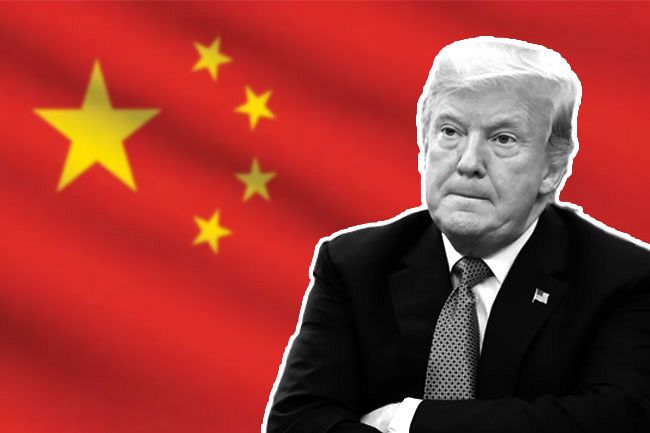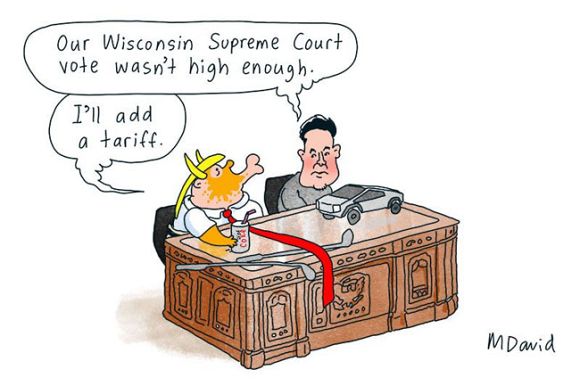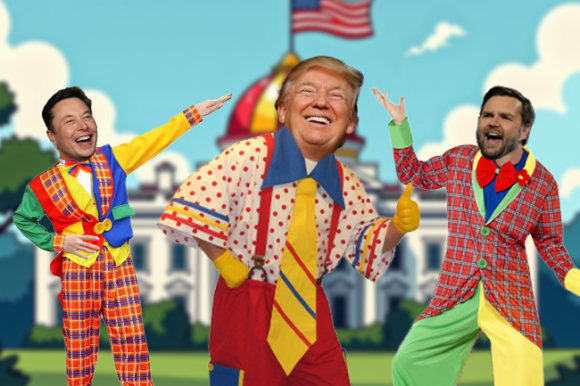Trump's latest move in his ongoing trade war drew the ire of many global economies, with China delivering swift retaliation, writes Imran Khalid.
IN WHAT MAY go down as a historic miscalculation, U.S. President Donald Trump declared 2 April 2025 as “Tariff Liberation Day”, a grandiose attempt to re-frame protectionism as patriotism. Underneath the fanfare, however, lies a deeply unsettling reality: Washington’s latest economic offensive has drawn not only swift reprisal from China but also a broader negative global response that could permanently reshape the balance of international trade.
The global fallout it has triggered tells a different story — one of diplomatic miscalculation, strategic overreach and growing international fatigue with America’s protectionist posture.
China’s retaliation was swift but not rash. Within 48 hours, Beijing imposed a 34% tariff on all American imports, effective from 10 April. Far from being symbolic, this decision is backed by restrictions on the export of critical raw materials — most notably rare earth elements, essential to U.S. military and technology sectors. It is a targeted economic counteroffensive aimed at America’s industrial heartland and political psyche.
China’s strategic calculus is unmistakable. Not only did it counter Trump’s tariffs with fiscal measures of its own, but it also signaled broader intent by invoking the World Trade Organisation, accusing the United States of undermining the very norms it once championed.
But what has unsettled policymakers in Washington even more is that China didn’t retaliate in isolation. In an extraordinary display of global discontent with American trade belligerence, a chorus of key economies – including the European Union, Brazil, Australia, South Africa and Mexico – moved in unison to announce their own retaliatory tariffs.
For a White House that believed it could divide and pressure nations into submission, the coordinated pushback is a sobering rebuttal. For many in the Global South and parts of the Western bloc, Trump’s move was the final confirmation that Washington is no longer the responsible steward of the global trade order it once led.
Financial markets, ever a barometer of geopolitical risk, delivered an immediate and damning verdict. The markets responded with unambiguous disapproval. Within two days of Trump’s announcement, the Dow Jones Industrial Average lost more than 1,200 points, reflecting the nervousness of investors unsure about the direction of U.S. trade policy.
Shares of companies deeply integrated into China’s supply chains – Tesla, Apple, Boeing – plummeted. Tesla alone saw an 8% decline after Beijing announced heightened regulatory checks on foreign electric vehicles entering the Chinese market.
This was not limited to American exchanges. London’s FTSE, Frankfurt’s DAX and Tokyo’s Nikkei all saw significant declines. Hong Kong’s Hang Seng Index dropped by nearly 4.5%. In currency markets, the dollar weakened notably as investors sought safer havens, reflecting the sudden sense of instability triggered by a single day’s political theatrics.
The irony of the moment is hard to miss. The United States, once the architect of global free trade, now finds itself increasingly isolated — its economic diplomacy reduced to bluster and bullying, its leadership questioned not only by its rivals but by its long-time allies.
In contrast, China enters this confrontation from a position of strategic and fiscal strength. With foreign reserves exceeding US$3 trillion (AU$5 trillion) and a trade apparatus that has been quietly diversifying over the last decade, China is not merely responding; it is adapting, expanding and deepening ties with economies that no longer see Washington as a reliable partner.
Over the past decade, Beijing has quietly embedded itself into the fabric of global supply chains through the Belt and Road Initiative, digital finance projects and deepened trade pacts across Asia, Africa and Latin America. When confronted, it does not blink — it recalibrates.
Meanwhile, the United States looks increasingly encumbered by its own contradictions. Inflation remains stubborn, the federal debt has crossed US$35 trillion (AU$58 trillion) and Congress remains gridlocked. Against that backdrop, launching a trade war with multiple global partners at once is less an act of strength than one of economic self-sabotage.
The American consumer, already facing high prices, is about to face further cost increases. Farmers, manufacturers and exporters will suffer from the loss of key markets. The ideological impulse to appear “tough on others” may briefly energise Trump’s political base, but its costs will be borne by working Americans and an already fatigued global system.
The global trade order, once underpinned by multilateral norms and cooperative institutions, is now fraying at the seams. Trump’s 2 April announcement may have been branded as a moment of economic “liberation”, but in truth, it reflects a pivot toward isolationism that most of the world is neither willing to follow nor inclined to tolerate. What emerges in its place may well be a multipolar trade landscape.
In this unfolding saga, it is China, India, Brazil, Australia and the EU – not Washington – that appear more composed, more coordinated and more forward-looking. Trump may have hoped to reassert American primacy through confrontation. Instead, he may have accelerated the very transformation he hoped to prevent: a world less centered on the United States and more aligned with a resilient, adaptive and globally connected China.
Imran Khalid is a geostrategic analyst and columnist on international affairs. His work has been widely published by prestigious international news organisations.
 This work is licensed under a Creative Commons Attribution-NonCommercial-NoDerivs 3.0 Australia License
This work is licensed under a Creative Commons Attribution-NonCommercial-NoDerivs 3.0 Australia License
Support independent journalism Subscribe to IA.

Related Articles
- The West Is Red
- Closed for business: The oddities of Trump’s tariffs
- CARTOONS: Mark David offers to buy NZ
- Communities of faith cringe at Trump’s multiple mockeries
- Trump problems? Lambie and Cash to the rescue!











